Church of MO: Heavyweight Contenders 1996
And in those days, God said let there be dial-up modems, and he yelled down the hallway at his wife to get off the line so He could fire up the AOL connection, see if He had any mail, and check up on Motorcycle Online when we were two years old. Phone home, Andy Saunders, where are you?
Matchup of the Heavyweight Contenders
It’s not the original musclebike — the Vincent Black Shadow was probably that — but it’s been around since the beginning of time. Well, at least since 1984, and that makes the 1198cc V-four cylinder V-Max one of the longest-lived motorcycles, and also one of the most unchanged. New brakes and all-black paint were the only changes for ’96. When it debuted more than a decade ago, the Max machine was astounding, offering more power than just about anything without wings and a Pratt and Whitney engine, all in a chassis that appeared to be deliberately designed for the street drag racer, who didn’t have to turn corners.
It never was a handler, even back then. And every other powerful motorcycle on the market was big and heavy, so its substantial weight wasn’t a disadvantage. Nowadays, with a new generation of lightweight motorcycles to compete against in the traffic light Grand Prix, its bulk is noticeable. On our brand new V-Max, even before it’s stock rear tire (the V-Max is shod with low-lifetime Bridgestone Exedras) went bad, handling was, shall we say, interesting. It’s quite a feeling to gingerly feel your way around a corner, throttle carefully feathered, as the forks pogo and the front wheel threatens to push every inch of the corner.
But the king of raw power since 1984 still makes it big in the cool stakes. Park on the boulevard on a Saturday night, and who cares about corners. The added grunt corralled by the V-boost system (which directs inlet charge between carburetors) and the beefy V-4 engine means that there are still few challengers who stand a chance. There’s still little that will beat a V-Max, at least in a straight line. The V-boost system and low gearing guarantee that. Once you get into that first corner though, all bets are off. And highway cruising is buzzy, thanks again to the low gear ratios. Suspension was primitive, even in 1984. The narrow, conventional front fork lacks sophisticated damping control and is easily overwhelmed. The rear shock is classically oversprung and underdamped, and the motorcycle is designed with a long wheelbase, carrying a lot of weight on the rear.
Try to corner hard, and you’ll regret it, as the front wheel starts to push and the back pogos all over the place. It is fairly easy to lean over enough, at least on a smooth road, to scrape the pegs. As a practical, day-to-day motorcycle the Max is a little overwhelmed. The 4.0 gallon gas tank lives under the seat (the dummy tank actually contains the airbox and the header tank for the radiator), and to refill it, which you have to do after you hit the electric reserve button at around the 100 mile mark, you must first pull two underseat mounted toggles. Then, to the delight of gas station attendants everywhere, the mid part of the seat bursts open, revealing the lockable filler cap below.
Party games aside, the V-Max is fun to ride around town because of its good looks and low down grunt, but out on the open road the fun diminishes, as narrow, upright bars head the rider up into the wind like a parachute at any speed above 65. Apart from the electric gas reserve switch on the right handlebar (now why hasn’t anyone else copied that?) rider amenities are few. The tachometer is buried in the front of the faux gas tank, and only readable when you’re nodding off at the wheel. But, hey, you have to live with a few compromises when what you want to do is ride the coolest looking musclebike in town. And the Yamaha is still unarguably that.
3rd placeTriumph Speed Triple
By now the Triumph formula should be well known. Take the basic, modular chassis design, add whatever frills are necessary for the task at hand, apply beautifully styled graphics and a couple of Union Jack flags, and watch the enthusiasts drool. The black on black Speed Triple has been available in Europe for three years now, but is a relatively recent arrival in the U.S. It uses Triumph’s 885cc three cylinder engine, in the same frame as the dualsport Tiger model, but with differing fork, shock and bodywork (or lack of: the Speed Triple is mostly about the naked look).
We had our doubts about including the Triumph in the test: After all, at only 885 cc, it gave away capacity to the multi cylinder competition and much weight to the twin cylinder rival (the Ducati). And at first the motor seemed low-powered: That was until we ran all the bikes away from the lights at once, and the Triumph took the lead. It’s a great motor once you realize it has to be revved. There’s not too much power down low in the rpm range, but get that three cylinder motor spinning and it pulls with alacrity. Carburetion glitches seem to hamper the Triumph in the midrange, and we’re sure that a little tuning would help the gas consumption: the Triple was the thirstiest of the lot, even out-gulping the V-Max into the low thirties when both were ridden side by side.
Once you do get the motor revving, power builds until it reaches a flat spot just before the 9,500 rpm redline. Keep it spinning in the sweet spot, and the triple will keep up with the rest of them, at least until the road begins to bend. The riding position was the sportiest of the lot, in that the narrow, clip-on bars put the rider into a forward crouch. But for most riders, the footrests were a little too far forward for the bars. If the bars were replaceable, we’d say just change to a cowhorn bar, but the bars are cast, non adjustable, non replaceable. It’s kind of a pity that a bike built from a modular design should be so non-customizable. We would have voted the Triumph higher marks but for one thing – the suspension and resulting handling problems.
For a sporty motorcycle, the Triumph sure has a lousy suspension setup. Both ends of the bike are underdamped and undersprung. The frame, (the same type used for all Triumph models), is a tubular steel spine type, and means the bike is high (too high for some short-legged riders: One of the reasons Triumph’s Thunderbird is popular is that shorter riders can get their feet on the ground). Combine the height with the mushy, wallowy suspension and uncertain handling and you have a recipe for rider distrust. These criticisms have been leveled at Triumph for several years now, and we’re beginning to wonder why they don’t fix up the suspension to suit the sporty image they’ve adopted. True, very few Triumph owners will push their bikes to the limit, but the competition (even the big, wallowy Honda) is just so much better around the bends. Heck, even the V-max wasn’t that much worse.
Given these criticisms, it probably doesn’t really matter that the Triumph was shod with slightly long in the tooth Michelin Hi Sports, which aren’t famous for their responsiveness. Bridgestone Exedras would have worked just as well. The Speed Triple has potential for the top of the musclebike class – but it doesn’t quite know what it wants to be. The riding position is a compromise between sportbike and standard. Low footpegs and knee cutouts in the tank are the sporty bits. Narrow handle bars lack musclebike leverage. The tires fitted were lacking feel in hard sporty cornering (although nobody expects a musclebike to corner well). Compromises in the suspension let this motorcycle down: but even with its compromised design, if it had been a smoother suspended performer, it would have been hard to beat on the street. For: Character, soulful wail of three cylinder motor. Good brakes. Surprising peak power Against: Hi-strung, peaky power, odd riding position nobody liked, spongy front suspension.
More by John Burns



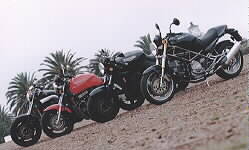

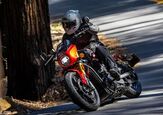
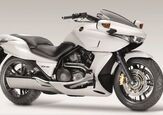
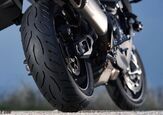
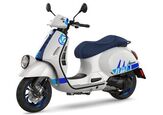
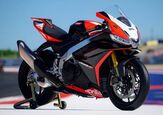
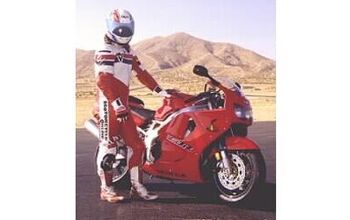
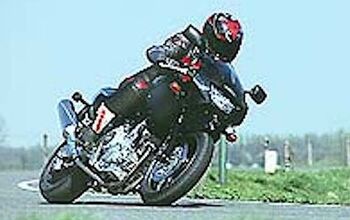
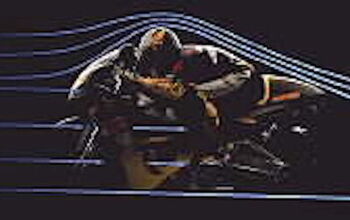
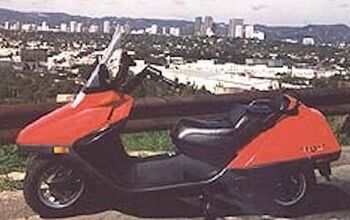
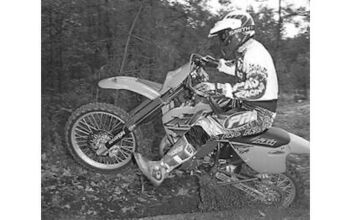
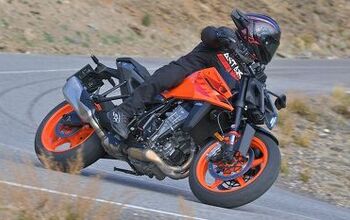
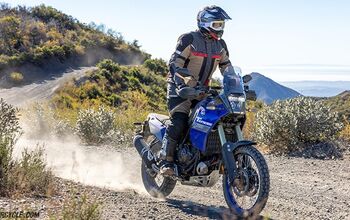
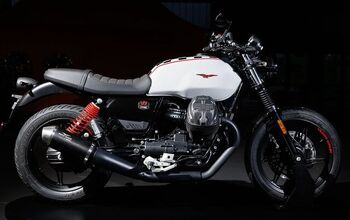
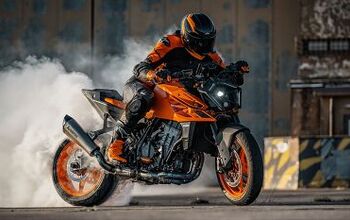
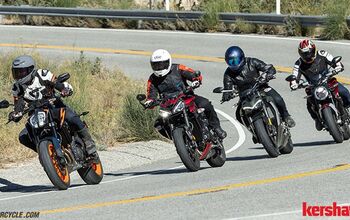





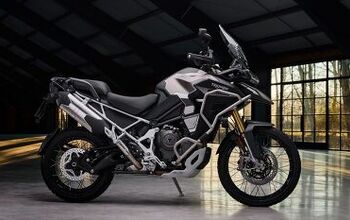
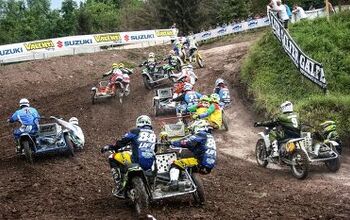
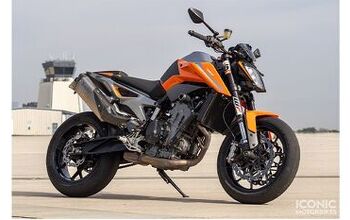
Comments
Join the conversation
If you could have a clean example of any of these, what would you want? I'm taking the Speed Triple. I bought my jacket from a dealership that carried them. While I was excited to have my bike, a Seca 900, I really wanted the triumph.
i'd not mind having one of each in my garage. Speed triple would need to be orange though.